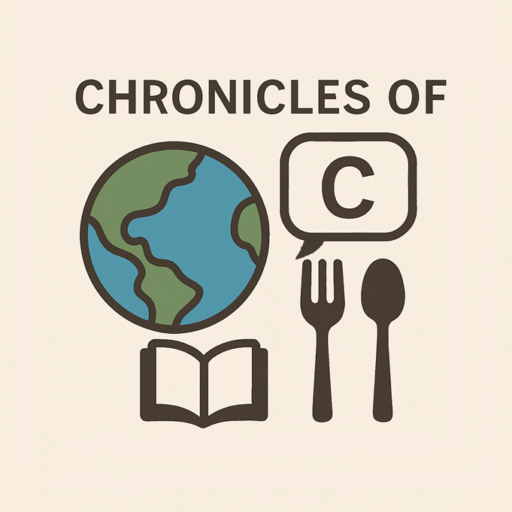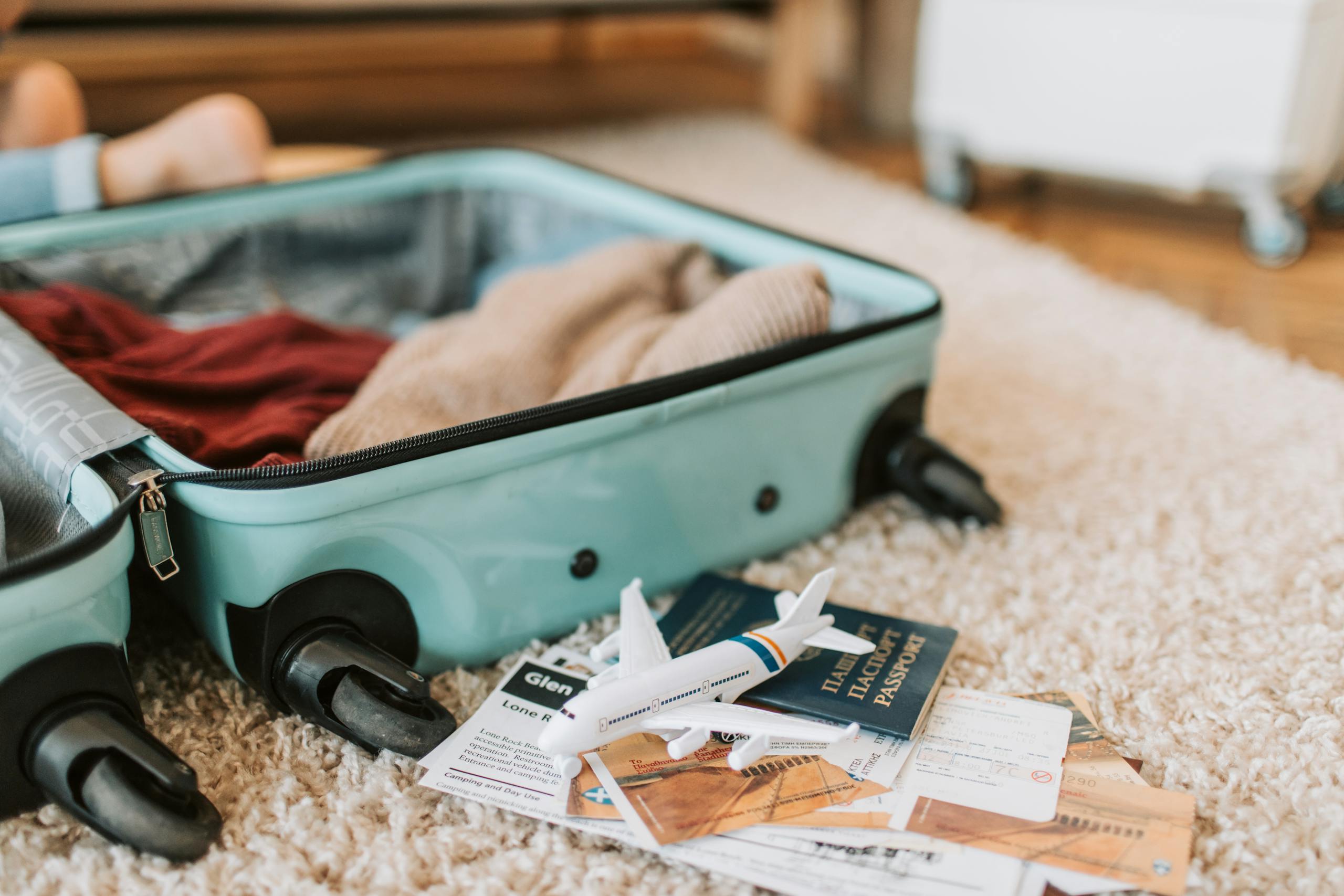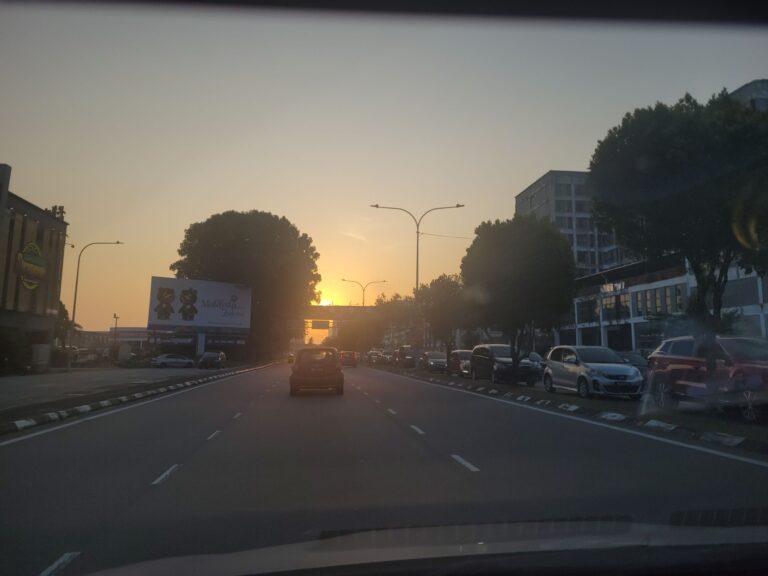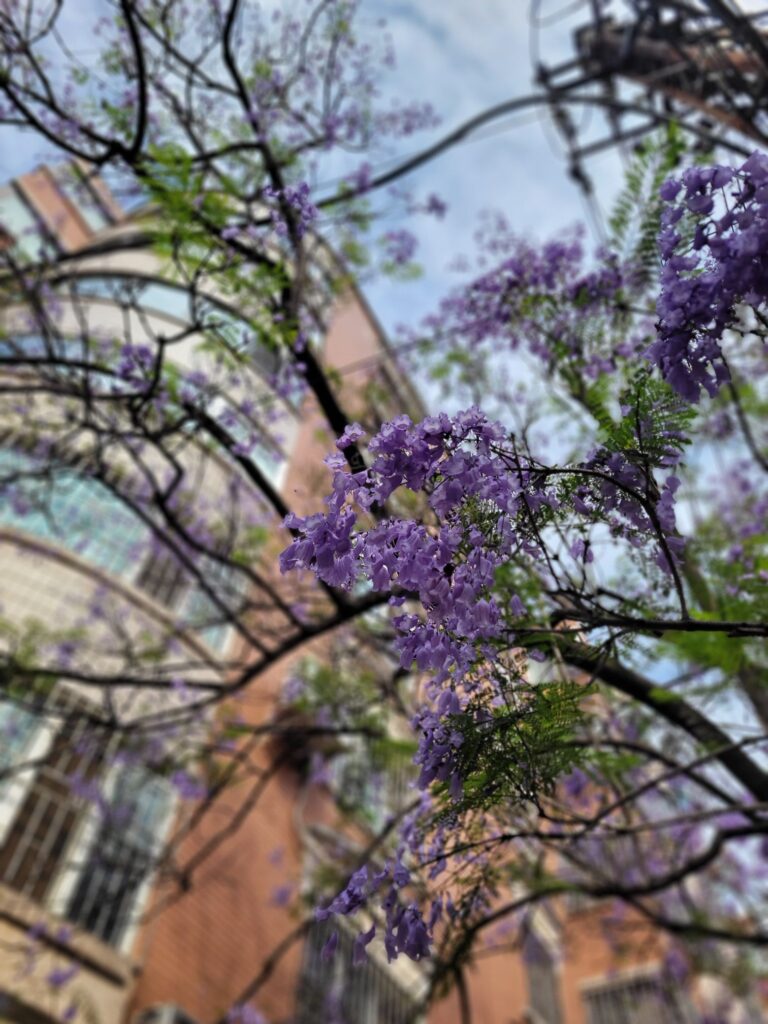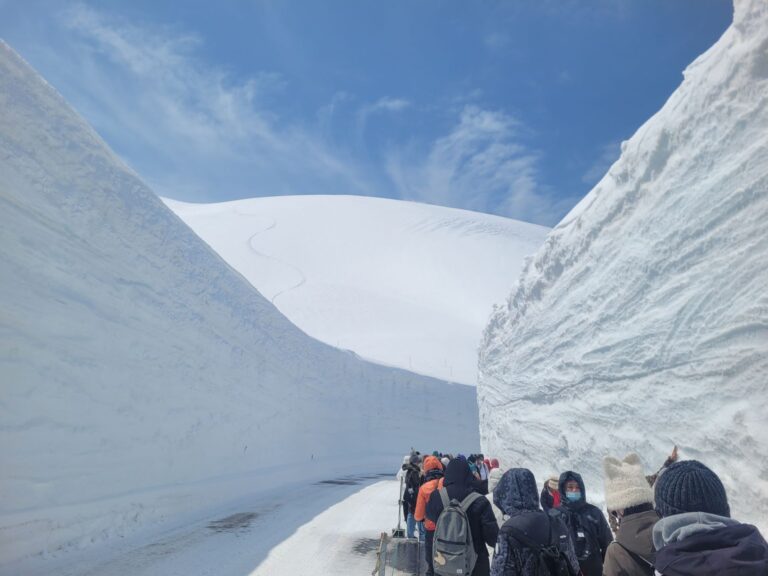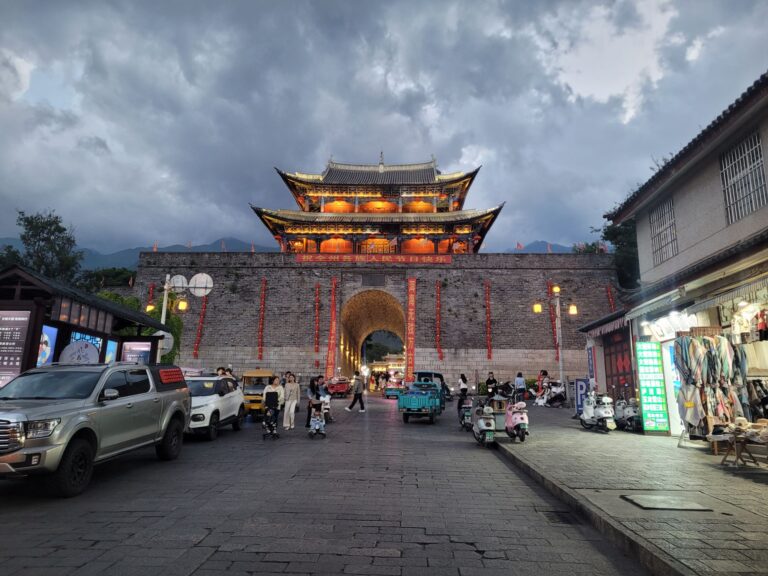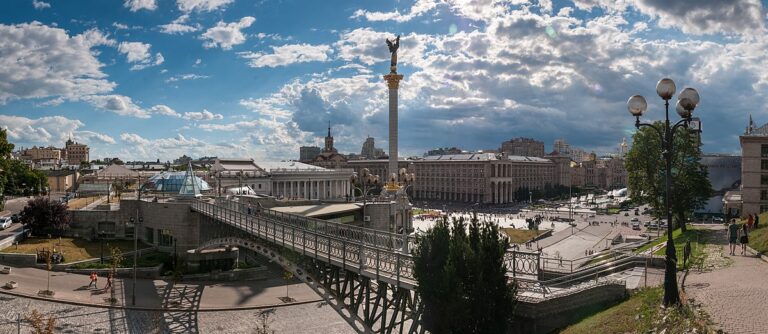💬 Introduction: Why Smart Travel Planning is Your Ticket to Unforgettable Adventures
This is your travel planning guide.
Remember that first trip you took? Maybe it was a whirlwind of confusion, unexpected expenses, a lot of time spent on trying to figure out whether it was the right hotel or flight or transport option for your trip? Perhaps you spent more time stressed than soaking in the sights once you got there.
I recall a trip to Paris early in my first trip to Europe where I almost missed a pre-booked entry to climb Notre Dame because I completely misjudged metro travel times and walking times (The Notre Dame caught fire that same trip). Contrast that with a later, well-planned journey through Japan where every transition felt smooth, allowing me to fully immerse myself in the environment. The difference? Thoughtful travel planning.
Travel planning today is more than just booking a flight and hotel. It is about understanding your own travel desires and matching them with the practical steps to make them happen, building your own trip that is meant for you, and executing it successfully.
Ready to transform your travel planning? This guide will give you the confidence to build better trips. And do not miss our free printable Ultimate Travel Planner Checklist at the end, your essential companion for every journey (Coming soon)!
⓪ Stage 0: The Pre-Planning Power-Up – Your Trip Planning Essentials Checklist
Before you dream of destinations, a little groundwork makes a huge difference. These pre-trip essentials are non-negotiable for smooth travels. Think of this as Stage Zero – planning before the planning.
A lot of us are not aware of this stage. My eyes once opened up to that cheap flight promotion and immediately snagged it, not realizing that it was a horrible mistake. It was just post COVID, and countries were still in the stages of opening up. I bought tickets to Shanghai, only realizing a few hours later (luckily), that China now required a visa for my country for the time being, and everyone who was trying to apply for a visa then were locals who wanted to return to their families (impossible long queues for someone like me who is working). I had to cancel my flight tickets at a cost.
Why This Stage Matters Taking care of these items early prevents last-minute panic and potential roadblocks. A valid passport or the right visa can be the difference between a dream trip and a cancelled one.
Key Pre-Trip Administrative Tasks:
- Passport & Visa Check:
- Passport Validity: Ensure your passport is valid for at least six months beyond your intended return date. Many countries enforce this rule. This is a common mistake.
- Visa Requirements: Research if your destination(s) require a visa for your nationality. Check official government or embassy websites. This is a very common mistake for people from my country given the strength of the passport.
- Processing Times: Apply for visas or passport renewals well in advance. Standard processing can take weeks, even months. Expedited services cost more and in my opinion not needed for leisure travel with proper planning.
- Health & Vaccinations:
- Consult Your Doctor: Visit your doctor or a travel clinic 4-6 weeks before your trip. Discuss your itinerary and any pre-existing conditions. Do this especially if you are traveling to developing countries, planning for higher risk activities or if you have pre-existing conditions.
- Recommended Vaccinations: Get any necessary or recommended vaccinations for your destination. Some require multiple doses spread over time.
- Prescription Medications: Ensure you have enough prescription medication for your entire trip, plus a little extra. Carry it in its original packaging with a copy of your prescription.
- Travel Advisories:
- Government Resources: Check your country’s official travel advisories for your destination. These provide up-to-date information on safety, security, local laws, and entry/exit requirements.
- Consider registering your travel abroad: This helps your government locate you and provide assistance in case of an emergency.
- Inform Your Bank & Credit Card Companies:
- Travel Notifications: Let your bank and credit card providers know your travel dates and destinations. This prevents them from flagging overseas transactions as suspicious and freezing your cards.
- Check Foreign Transaction Fees: Understand what fees your cards charge for international use.
- Arrange Home & Pet Care:
- Pet Sitters/Boarding: Book reliable care for your pets.
- Mail Hold: Arrange for your mail to be held or collected.
- Home Security: Inform a trusted neighbor of your absence and make arrangements for your home to appear occupied.
Tip Box: The “6 Months Out” Rule for International Travel Planning For major international trips, especially those requiring visas or specific vaccinations, start these pre-planning steps about six months before your departure date. This gives you ample time to handle any unexpected delays.
🗺️ Section 1: How to Build an Itinerary That Feels Like You
A great itinerary is a roadmap for your adventure, but it should also be a reflection of your personality and travel wishes. It is less about ticking off every landmark (and following online guides blindly) and more about creating a journey that you believe you would enjoy.
Align Your Trip with Your Values & Travel Style Before you pick places, consider why you travel, and note that this may evolve as time passes.
- Cultural Immersion: Do you want to live like a local, learn the language, and explore traditions?
- Relaxation: Is the goal to unwind on a beach, enjoy spa treatments, or read a book by a lake? Basically just be away from everything.
- Adventure: Are you seeking thrills like hiking, diving, or exploring remote areas?
- Connection: Is the trip about spending quality time with loved ones or meeting new people
Understanding your core travel values helps you make choices that lead to a more fulfilling trip.
The Step-by-Step Flow for Intentional Itinerary Planning:
- Choose Travel Dates & Define Constraints:
- How much time do you have?
- What is your approximate budget for activities and daily spending (we will cover overall budgeting later)?
- Who are you traveling with? Their needs and preferences matter as well.
- Define the “Why” of This Specific Trip: Different trips may have different meanings to you depending on where and who you are traveling with, and what is happening in your life at the moment. ****What do you hope to feel or achieve on this journey? Rejuvenated? Inspired? Connected?
- Research Destinations with Depth: Go beyond the top tourist attractions. Read travel blogs, local forums, and guidebooks. Look for hidden gems, local markets, and unique cultural experiences. Read my blog 😉
- Prioritize Experiences, Not Just Places: Instead of listing cities, list experiences: “Take a cooking class in Tuscany,” “Hike to a waterfall in Costa Rica,” “Visit a specific art museum in Amsterdam.” This helps you build a trip around what truly excites you.
- Plan Around Your Ideal Pace: Embracing Slow vs. Efficient Fast Travel:
- Slow Travel: Fewer locations, more time in each. Allows for deeper immersion and spontaneity.
- Fast Travel: More locations, shorter stays. Good for getting an overview if time is limited.
- There is no right or wrong, only what suits your current trip goals.
- Build in Flexibility & Spontaneity:
- Do not overschedule. Leave room for unexpected discoveries, a leisurely coffee, or simply resting. Don’t tire yourself out and make yourself miserable (I am guilty of this rather often) Some of the best travel memories come from unplanned moments.
Sample Itinerary Frameworks (Adaptable Templates):
- 1-Week Intensive Explorer: Focus on 1-2 key cities or a small region. Ideal for deep dives into a specific culture or activity.
- 2-Week Balanced Journey: Mix 2-3 diverse locations. Combine city exploration with nature or relaxation.
- 1-Month Deep Dive Immersion: Settle into 1-2 base locations. Explore extensively, take day trips, and perhaps even learn a new skill.
Tip Box: The “Less is More” Philosophy – Avoid the “See Everything” Trap Trying to cram too much into one trip leads to exhaustion and a superficial experience. Choose fewer, more meaningful activities. You can always come back again another time (by doing so you give yourself additional reason to!)
✈️ Section 2: Smart Booking Strategies: Finding the Best Flights & Accommodation
Booking flights and accommodation can feel overwhelming, but with a few smart strategies, you can find great options that fit your budget and preferences.
Decoding Flight Bookings: When to Book, Where to Look, and How to Save
- When to Book:
- General Rule: For international flights, start looking 2-8 months in advance. For domestic, 1-3 months out is often a good window.
- Avoid Peak Myths: The idea of “magic booking days” (like Tuesdays) is largely outdated. Prices fluctuate constantly.
- Consider Seasonality: Flights are pricier during holidays and peak tourist seasons.
- Look for promotions: Certain booking platforms offer additional benefits and discounts on certain dates.
- Where to Look:
- Flight Search Engines: Use sites like Google Flights, Skyscanner, or Kayak. These compare multiple airlines and travel agencies.
- Airline Websites: Always check the airline’s own website too. Sometimes they have exclusive deals or better offers.
- Incognito Mode: Some people believe airlines track searches and raise prices. Using your browser’s incognito or private mode might help, though evidence is anecdotal.
- How to Save:
- Be Flexible with Dates/Airports: Flying mid-week or to a nearby airport can sometimes save significant money.
- Set Price Alerts: Many search engines let you track a specific route and notify you of price changes.
- Budget Airlines: Be aware of their strict baggage rules and extra fees for everything. Read the fine print.
- Layovers vs. Direct: Direct flights are convenient but often cost more. A well-timed layover can save money and even offer a chance to briefly explore another city (so don’t just dismiss that 36hr layover)
I would say once you find a price that you are comfortable with, just lock it in and purchase your tickets. Don’t waste too much time comparing (your time itself is money as well). After you get your tickets, don’t go and check the prices again to see how it has fluctuated. More often than not it will drop (by chance), and it will affect your mood.
Once your trip is over, you will barely even think about the exact cost you spent on your flight. Ultimately as long as it gets you to where you want to go, it would have served its purpose.
Choosing Your Perfect Stay: From Hotels to Hostels & Local Stays
- Understand Different Accommodation Types:
- Hotels: Offer a range of amenities and service levels. Good for comfort and convenience.
- Hostels: Budget-friendly, social atmosphere, often with dorms and private rooms. Great for solo travelers or those on a tight budget.
- Vacation Rentals (e.g., Airbnb, Vrbo): Offer more space, kitchens, and a “live like a local” feel. Good for families, groups, or longer stays.
- Guesthouses/B&Bs: Often family-run, providing a more personal touch.
- Key Factors to Consider:
- Location: Proximity to attractions, transport, and safety of the neighborhood.
- Budget: Set a nightly budget and filter your searches. Starting from Google Maps is a good option, but they will not list prices that may be discounted from your membership with certain platforms. You can always check the prices again at a later date, there are chances that it has dropped.
- Reviews: Read recent reviews carefully. Look for patterns in comments about cleanliness, noise, and service. Don’t just dismiss hotels with less reviews, they may be newer and that is a benefit in itself.
- Amenities: Wi-Fi, breakfast, kitchen, laundry, parking, luggage storage – list your must-haves and your good-to-haves. You will know what you truly need on a trip after a while. Eg. Need a gym? (but make sure you hav plans to use it); Breakfast? Or would you rather venture out to try something new?
- Trusted Booking Platforms:
- Booking.com, Expedia, Agoda, Hostelworld, Trip.com.
- Always check the cancellation policy before booking. Many platforms offer free cancellation up to a certain date (sometimes albeit at a higher price, but gives you flexibility and a peace of mind)
- Direct Booking Benefits: Sometimes booking directly with a hotel can offer better rates, perks, or more flexible cancellation.
Tip: The Power of Shoulder Seasons for Better Deals & Fewer Crowds Traveling just before or after the peak season (the “shoulder season”) often means lower prices for flights and accommodation, pleasant weather, and fewer tourists.
🧳 Section 3: Packing Like a Pro: Your Guide to Efficient and Light Travel
Packing can be a source of stress, but it does not have to be. With the right mindset and a smart approach, you can pack efficiently for any trip, ensuring you have what you need without lugging around unnecessary weight.
Always think about weight/volume to utility ratio. As you get more experienced with traveling, you will realize that you actually need less and less things.
The Core Packing Mindset: Minimalist, Modular, and Mission-Specific
- Minimalist: Bring only what you truly need. Lay everything out, then try to remove a third.
- Modular: Choose items that can be mixed and matched to create multiple outfits. Think neutral colors and layers.
- Mission-Specific: Pack according to your destination’s climate, culture, and planned activities.
Ultimate Packing Lists
- Long-Term Minimalist Travel Essentials:
- Versatile clothing (e.g., merino wool shirts, quick-dry pants).
- Comfortable, broken-in walking shoes.
- Solid toiletries to avoid spills.
- Portable power bank. And the charging cable for your phone.
- Gear for Cultural Immersion & Respect:
- Scarves/Wraps: Essential for women visiting religious sites or conservative areas. Can also be used for warmth or style.
- Modest Attire: Long pants/skirts, shirts covering shoulders for certain regions. Research local customs.
- Small, Thoughtful Gifts: If visiting local families or communities, a small item from your home country can be a nice gesture.
- Weather-Specific Must-Haves:
- Rain Gear: Lightweight, packable rain jacket and/or umbrella.
- Layers: Fleeces, thermal underwear for cold climates.
- Sun Protection: Hat, sunglasses, high-SPF sunscreen for sunny destinations.
- Don’t Forget Your Comfort Items:
- A favorite travel pillow, a good book, or a small item that makes you feel at home can make a big difference, especially on long trips.
What Not to Bring: Avoid Overpacking & Culturally Inappropriate Gear
- Too many shoes (usually 2 pairs are enough).
- Full-size toiletries (travel sizes save space and weight, hotels may also provide them, you can also opt to purchase them when you get to your destination).
- Expensive jewelry or valuables that could be lost or stolen. (Do you really need to bring these things along?)
- Revealing clothing if traveling to conservative areas.
- Anything you would be devastated to lose. Be prepared that you may lose anything that you bring along for the trip.
Game-Changing Packing Tools:
- Packing Cubes: Compress clothing, keep items organized, and make finding things easier.
- Reusable Toiletry Bottles: Fill with your favorite products.
- Electronics Organizer: Keep cables, chargers, and adapters tidy.
- Basic First-Aid Kit: Band-aids, pain relievers, antiseptic wipes, any personal medications.
- Travel Lock: For securing your luggage.
I use a packing list with checkboxes on Notion, and I reuse the same packing list each time (with just some slight variations). It has made life so much easier for me.
Another tip would be to just chuck your travel related essentials in the luggage after you complete a trip so you don’t have to spend time searching again when you need them.
Checklist Graphic/Printable PDF: “Your Essential Packing Checklist – Never Forget Anything Again!” – Download the Editable Ultimate Packing List Here! (Coming soon)
💰 Section 4: Travel Budget Tips: Funding Your Adventures Without Breaking the Bank
A well-planned budget is key to enjoying your trip without financial stress. It is not about being cheap; it is about being smart with your money so you can spend it on experiences that matter most to you. You can afford to travel with any budget you may have. But make sure you spend within your means and consider whether travel is the best use of your money at that point in your life.
Understanding Your Travel Spending: Key Budget Categories
Estimate costs for each of these before your trip:
- Pre-Trip Costs: Visas, travel insurance, vaccinations, new gear.
- Transport:
- Major: Flights, long-distance trains/buses to reach your destination.
- Local: Subways, local buses, taxis, ride-shares within destinations.
- Accommodation: Hotels, hostels, rentals.
- Food & Drink: Daily meals, snacks, drinks (from street food to nice restaurants).
- Activities, Tours & Cultural Experiences: Museum entries, guided tours, classes, adventure activities.
- Souvenirs & Shopping: Optional, but good to budget for if you plan to buy things.
- Contingency/Emergency Fund: Aim for 10-20% of your total budget for unexpected expenses or splurges.
Realistic Budgeting by Travel Style:
- Backpacker/Budget-Conscious: Focus on hostels, local food/making your own meals, free activities, and overland transport.
- Flashpacker/Mid-Range Comfort: Mix of budget-friendly options with some comfortable hotels, a few nice meals, and paid attractions.
- Immersive/Cultural Traveler: May allocate more to unique experiences, classes, or guides, potentially balancing with simpler accommodation.
- Luxurious: I think you’ll be good without my advice – neither am I at the point in my life where I can give such advice 💎
Tools & Apps for Tracking Expenses Before and During Your Trip:
- Spreadsheets (Google Sheets, Excel): Great for pre-trip planning and detailed tracking.
- Budgeting Apps (e.g., Trail Wallet, TrabeePocket, Splitwise for groups): Help you log expenses on the go and see where your money is going.
- Notebook: A simple pen-and-paper method works too.
Currency Conversion, ATM Strategies, and Managing Money Abroad Safely:
- Currency Exchange: Avoid exchanging large amounts at airports; rates are usually poor. Use ATMs upon arrival for better rates.
- ATMs:
- Inform your bank of your travel dates.
- Use ATMs in well-lit, secure locations (e.g., inside banks).
- Be aware of withdrawal fees from both your bank and the local ATM. Some banks offer fee reimbursement.
- Withdraw larger amounts less frequently to minimize fees.
- Credit Cards: Use for larger purchases if your card has low or no foreign transaction fees. Always choose to be charged in the local currency, not your home currency, to avoid unfavorable conversion rates (Dynamic Currency Conversion).
- Multi-currency Accounts: Allows you to hold, send, and receive money in multiple currencies simultaneously, often with savings on exchange rates and also reduced foreign transaction fees.
- Cash: Carry some local cash for small purchases, markets, and places that do not accept cards. Keep it secure.
My personal tip would be not to think too much about money until it takes away the joy of your trip. I will almost never think about the money I spend entering a certain museum today, but I will always cherish and remember the memories I gained. If you are scrimping every cent while traveling, then consider that this may not be a good time in your life to travel.
How Immersive & Slow Travel Can Be Surprisingly Affordable: Staying longer in one place often means access to weekly or monthly rental discounts, the ability to cook some of your own meals, and less money spent on frequent transport between cities.
“Access Our Free Travel Budget Calculator or Google Sheet Template!” – Coming soon
🚌 Section 5: Transport Planning Tips: Navigating Like a Local (and Saving Money)
Getting around is a fundamental part of travel. Smart transport planning saves time, money, and stress, allowing you to focus on enjoying your destination.
Choosing Your Wheels: When to Fly, Train, Bus, or Local Transport Between Places
- Flights: Best for long distances or crossing water. Can be expensive and time-consuming with airport procedures.
- Trains: Excellent for medium to long distances in regions with good rail networks (e.g., Europe, Japan). Scenic, comfortable, and often city-center to city-center.
- Buses: Usually the most budget-friendly option. Good for shorter distances or areas without trains. Comfort levels vary.
- Ferries/Boats: Necessary for island hopping or coastal routes. Can be an experience in itself, enjoying the breeze while on water.
- Rental Cars: Offer flexibility for exploring regions at your own pace, especially rural areas. Consider license requirements, insurance, and parking.
Trusted Booking Sites & Apps for Transport (That I Actually Use):
- Flights: Google Flights, Skyscanner, Kayak. Direct websites.
- Trains/Buses (Europe): Omio, Trainline, Trip.com. Direct websites.
- Trains/Buses (Asia): Klook. Trip.com. Direct websites.
Mastering Local Transit: Subways, Buses, Trams, Tuk-Tuks (and what locals prefer)
- Research Before You Go: Look up your destination’s public transport system. Are there travel cards or passes that save money? This is a huge topic in itself.
- Offline Maps: Download Google Maps or local maps for offline navigation.
- Ask Locals: Do not hesitate to ask hotel staff or friendly locals for the best way to get somewhere.
- Embrace the Experience: Using local transport is a great way to observe daily life.
- Taxis: Some places have affordable taxis and can save you both energy and time by getting you from point A to B. But beware of scams and local traffic conditions.
Smooth Airport → City Transfers: Your First & Last Mile Sorted
This can often be one of the more stressful parts of the trip – lugging luggage around, being lost, risk of missing your flight.
- Research Options: Most airports offer trains, buses, taxis, or ride-shares into the city. Compare cost and convenience.
- Pre-Book if Necessary: For some shared shuttles or private transfers, booking ahead can be cheaper or guarantee a spot (make sure the service you have employed is reliable)
Inter-City vs. Intra-City Travel Tips (with cultural nuances like punctuality)
- Inter-City (Between Cities): Book main train/bus tickets in advance, especially during peak season or for popular routes. Punctuality varies by country (e.g., Japanese trains are famously on time; others might be more relaxed).
- Intra-City (Within a City): Usually, you buy tickets as you go or use a local travel card. Be aware of peak travel times on public transport. Rush hour is no joke in some places, and can add a lot of traveling time or discomfort.
🛡️ Section 6: Staying Safe, Healthy & Sane on Your Travels
Your well-being is paramount. A few precautions can ensure your trip is memorable for all the right reasons and enjoy it will not be in jeopardy.
Common Travel Health & Safety Mistakes (and Simple Fixes)
- Dehydration: Drink plenty of water, especially in hot climates or after flights. (Fix: Carry a reusable water bottle and refill it often.)
- Food/Water Safety: Be cautious with street food in some areas; drink bottled or purified water if local tap water is not safe. (Fix: “Boil it, cook it, peel it, or forget it.”)
- Ignoring Sun Protection: Sunburn can ruin a few days of your trip. (Fix: Use sunscreen, wear a hat, and seek shade during peak sun hours.)
- Petty Theft: Pickpocketing and bag snatching are common in tourist areas. (Fix: Be aware of your surroundings, use anti-theft bags, do not flash valuables. I carry a bag in front of me and keep my valuables there and within sight at all times)
- Not Listening to Your Body: Pushing yourself too hard leads to exhaustion and illness. (Fix: Pace yourself, schedule rest days.)
Travel Insurance: Why It’s Non-Negotiable & What Your Policy Must Cover Travel insurance is an essential investment, not an optional extra. Don’t cheap out on this.
- Medical Emergencies & Evacuation: This is the most critical coverage. Healthcare abroad can be incredibly expensive.
- Trip Cancellation/Interruption: Covers non-refundable costs if you have to cancel or cut your trip short due to covered reasons.
- Lost or Stolen Baggage/Belongings: Helps recoup some costs if your things go missing.
- Read the Fine Print: Understand exclusions, coverage limits, and the claim process.
Cultural Sensitivity & Safety: Navigating Local Norms, Modesty, Gestures, and Common Scams
- Research Local Customs: Before you go, learn about dress codes (especially for religious sites), appropriate greetings, tipping etiquette, and gestures that might be offensive.
- Be Aware of Common Scams: Research common tourist scams for your destination (e.g., “broken taxi meter,” “petition” groups). A polite but firm “no, thank you” is usually effective. Walk away.
- Trust Your Instincts: If a situation feels uncomfortable or unsafe, remove yourself from it. It’s not worth any risk.
Your Emergency Preparedness Kit:
- Copies: Keep physical and digital copies (in secure cloud storage) of your passport, visas, insurance, and important phone numbers, separate from the originals.
- Emergency Contacts: Share your itinerary and contact info with someone at home.
- Basic First Aid: Include essentials like band-aids, antiseptic wipes, pain relievers, motion sickness medication, and any personal prescriptions.
Staying Connected Securely: SIM Cards, eSIMs, Public Wi-Fi Dangers & VPNs
- Local SIM/eSIM: Often the cheapest way to get data and make local calls. eSIMs are convenient as you can activate them without a physical card.
- Public Wi-Fi: Be cautious. Avoid accessing sensitive information (like banking) on unsecured public networks.
- VPN (Virtual Private Network): A VPN encrypts your internet connection, providing security on public Wi-Fi and allowing access to content as if you were in your home country.
Prioritizing Well-being: Managing Travel Stress, Pacing Yourself, and Mental Health on the Road Travel can be tiring.
- Pace Yourself: Do not try to do everything. Schedule downtime to unwind and relax.
- Maintain Routines: Where possible, stick to some familiar routines (e.g., morning coffee, exercise).
- Stay Connected (to loved ones): Regular check-ins can help if you feel homesick.
- Acknowledge Culture Shock: It is normal to feel overwhelmed in a new environment. Be patient with yourself, and you can always take a break if you feel uncomfortable.
📱 Section 7: Digital Tools & Apps for Smarter, Smoother Travel Planning
Technology can be a fantastic travel companion, helping you stay organized, navigate, and discover.
My Essential Travel App Toolkit:
- Navigation:
- Google Maps: Essential for walking, driving, and public transport directions. Download offline maps for areas where you might not have data.
- Maps.me: Another excellent offline map option, often with more detailed trail information.
- Citymapper: Available for certain cities.
- Route Planning:
- Rome2Rio: Shows you how to get from Point A to Point B using various transport modes, with estimated costs and times.
- Communication:
- WhatsApp/Signal/Telegram: For messaging over Wi-Fi or data.
- Google Translate: Download languages for offline translation. The camera feature for translating signs is very useful.
- Finance:
- Youtrip/Wise/Revolut: Quick and easy currency conversions.
- Splitwise: For tracking shared expenses if traveling with others.
- Your banking apps.
- Organization:
- Notion/Evernote/Google Keep: For saving notes, confirmations, ideas, and creating digital itineraries.
- TripIt: Automatically organizes travel plans from email confirmations.
- Some people create a chat on ie Telegram and send everything that they need to the chat.
- Accommodation/Flights: Apps for your preferred booking sites (Booking.com, Airbnb, airline apps).
Syncing Your Itinerary: Calendar Integration & Digital Trip Timelines Add flight times, hotel check-ins, and key tour bookings to your digital calendar (Google Calendar, Outlook Calendar, etc.). Set reminders.
Organizing Your Travel Documents Digitally (Google Drive/Notion/Evernote System) Create a dedicated folder in a cloud service (Google Drive, Dropbox, OneDrive) for each trip. Make sure they can be accessible if needed. Store copies of:
- Passport and visas.
- Flight and hotel confirmations.
- Travel insurance policy.
- Tour bookings.
- Emergency contact list.
Curating Your Discoveries: Bookmarking Sights & Eats (Google My Maps, Pinterest, etc.)
- Google My Maps: Create custom maps with pins for places you want to visit, restaurants, etc. Add notes to each pin.
- Pinterest: Create travel boards to save articles, images, and ideas for destinations.
- Instagram Saves: Save posts of interesting locations or food spots.
There are dedicated apps to help with travel planning eg. Wanderlog, and we will cover those at a later date.
❓ Frequently Asked Travel Planning Questions (FAQ)
How far in advance should I start planning a big trip?
For major international trips, especially those involving multiple destinations or requiring visas, start planning 6-12 months out. For simpler domestic trips or short international getaways, 2-4 months is often sufficient. The key is to allow enough time for research, bookings, and any necessary paperwork without rushing.
What’s the biggest mistake people make when planning a trip?
One of the biggest mistakes is over-scheduling. Trying to cram too many activities or cities into a short period leads to exhaustion and a superficial experience. Another common mistake is not budgeting for unexpected expenses, which can add stress. Allow for flexibility and have a contingency fund.
How can I save money on travel without sacrificing experience?
Travel during the shoulder season (just before or after peak season). Be flexible with your flight dates and consider budget airlines (but read the fine print). Opt for accommodation like hostels or apartment rentals with kitchens. Eat like a local – street food and local markets are often cheaper and more authentic. Look for free activities like walking tours or hiking.
Is travel insurance really necessary?
Yes, absolutely. Travel insurance protects you from unforeseen events like medical emergencies (which can be incredibly expensive abroad), trip cancellations, lost baggage, and more. It provides peace of mind and can save you from significant financial hardship. Do not travel without it.
What are the most essential items to pack for any trip?
Beyond your passport and money, essentials include: any prescription medications, a basic first-aid kit, comfortable walking shoes, a universal adapter if traveling internationally, copies of important documents, and clothing appropriate for your destination’s climate and culture. A reusable water bottle is also highly recommended.
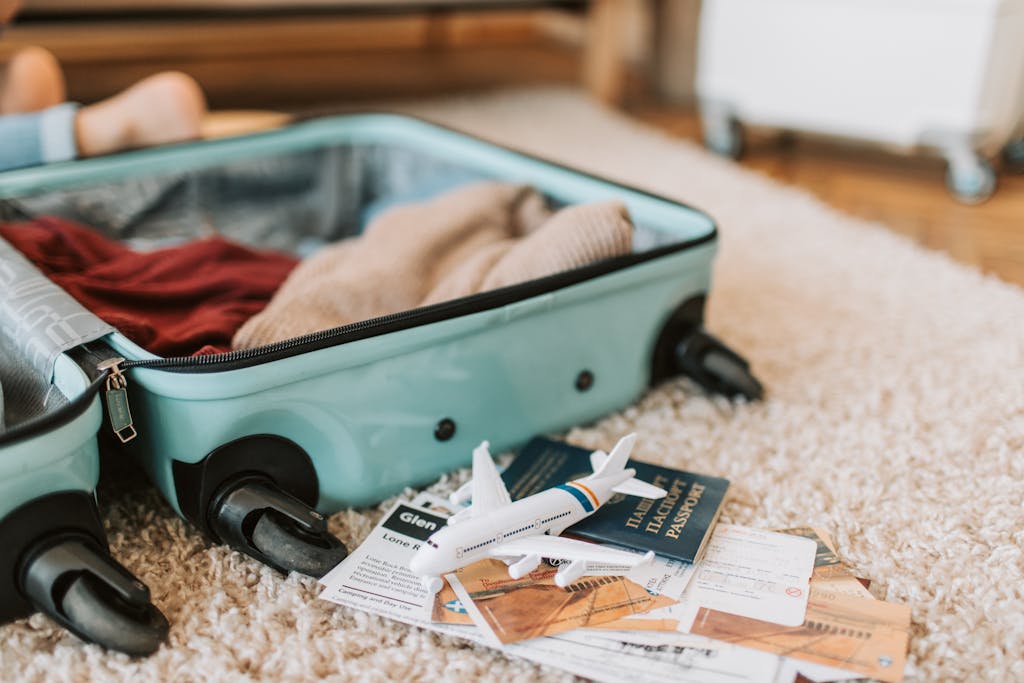
✨ Conclusion: Empowered Travel Planning is the Start of Every Great Adventure
Travel planning might seem like a lot of work, but it is an investment in your experience. It is not about creating rigid, minute-by-minute schedules. Instead, it is about empowering yourself with knowledge and preparation so you can navigate the world with more confidence, ease, and openness to whatever your journey brings.
When you plan thoughtfully, you free yourself up to truly be present, to connect more deeply with the places you visit and the people you meet. You reduce stress, save money, and create space for those magical, spontaneous moments that become cherished memories.
It is a skill that you need to put in effort to get better at, and you will get better at it with time, and things will get easier.
Use this guide as your foundation. Adapt it to your travel style. And most importantly, get excited about the incredible adventures that await.
Ready to become a travel planning expert? Download your Ultimate Travel Planner Toolkit now! It includes our printable checklist, itinerary templates, and exclusive tips to help you plan like a pro. Join our community of savvy travelers today! (Coming soon)
